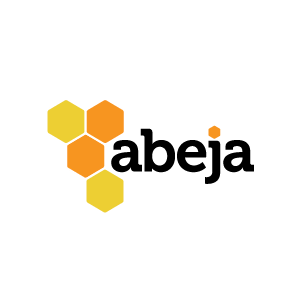Leasing a Donor List? Do These 3 Things First
How to Prepare for a Successful Donor Acquisition
Basic individual fundraising consists of three main activities – acquiring new donors, retaining (or renewing) past donors, and upgrading current donors.
Acquisition is critical to replace the 57 percent of donors who lapse each year, on average. But acquisition is also the most expensive activity and it takes the longest to return your investment.
For example, let’s say you leased a list of 10,000 cold contacts – people who had never heard of your nonprofit, but give to similar causes. On average, your direct mail campaign to this list would:
Cost $7,000-$10,000;
Result in 50-100 new donors; and
Return positive net income in 12-24 months.
For many smaller nonprofits, the juice just isn’t worth the squeeze. They do better acquiring donors first through other means. (If this is you, skip down to Leverage Your Warm Prospects.)
But if you are ready to make a long-term investment in growing your donor file, do everything you can to ensure your cold acquisition campaign is as successful as possible. We recommend that you first:
Maximize your donor retention
Leverage your warm prospects
Define your ideal donor persona
1. Maximize your donor retention
You’re probably familiar with the leaky bucket metaphor in fundraising. According to the Association of Fundraising Professionals, the average nonprofit has a retention rate of 43%. For every 100 donors they gain, they lose 57 of them!.
Before investing in acquisition, ask yourself if you are happy with your retention rate. (Remember, an industry average is just a benchmark, not a goal).
Of course, you can’t reach 100%. Some of these losses are due to factors outside your control – donors experience financial setbacks, prefer to give to other causes, or sadly die.
But over half of donors report leaving due to a charity’s lack of communication. You can control how and when you thank donors, report on how their dollars made an impact, and ask them to further support the cause.
If your retention rate isn’t where you want it to be, focus on developing a consistent and multi-channel communications cadence throughout the year of Ask, Thank, Report, and Repeat.
How often should donors hear from you? According to a study by Abila, more than half of all donors (and 72% of Millennials) want at least monthly communication. The old, once-a-year annual campaign isn’t enough to retain today’s donors.
Already have great communications, but still struggle with retention rate? You may have a data hygiene problem that obscures reality. Here’s how to fix that.
Bottom line: There’s no reason to invest time and money in donor acquisition if you don’t have the systems in place to retain them over the long term.
2. Leverage your warm prospects
Before you go asking strangers for money, thoughtfully ask yourself (or sing with me) …
“Oh who are the people in your neighborhood,
in your neighborhood,
in your neighborhood?”
Your “neighbors” are already familiar with your name, brand, reputation, and mission. That makes them warmer prospects than strangers from a leased list.
So, who are the people in your neighborhood? They could be:
Email subscribers
Event attendees
Volunteers
In-kind donors
Past clients
Vendors
Friends and family of your board/staff
Employees of sponsors
Members of affiliated houses of worship
If you gather all of the information you have on your neighbors, you’ll likely see lots of holes in their contact information. Some may have emails and nothing else. Others a name and phone number.
How do you fill in the gaps? With a data append.
A data append takes the information you have and adds the data you are looking for. The most common service is appending names and mailing address to an email address you already know.
Email to mailing address appends are cheap – typically $0.15 per match with a $500 minimum and a 40% average match rate. Abeja offers a special on this kind of append about twice a year during which we pool client appends to reduce everyone’s minimum cost.
3. Define your ideal donor persona
Cold acquisition campaigns are most successful when the prospects are a “lookalike audience” to your “ideal donor persona.”
Ideal donor persona: A fictional representation of your average donor who gives an average amount.* A persona identifies demographic, psychographic, behavioral, and geographic attributes they share.
Lookalike audience: A marketing term for an audience that shares the same demographic, psychographic, behavioral, and geographic attributes of your donors.
What attributes do your donors share? The average donor in the U.S. is female and 65 years old. Are your donors younger or older? Do they own a house or rent an apartment? Do they have kids? Do they live in urban or rural areas? Learn more about creating a donor persona and download our free worksheet here.
Keep in mind that behavioral attributes – what a person does – are the most important thing to focus on. Sometimes nonprofits prioritize where a donor lives. But numerous studies prove that just because someone lives in a posh ZIP code that doesn’t necessarily mean they are charitable givers.
When you are ready to lease a list, provide that persona to Abeja, or your specialized nonprofit list broker. We will use it to identify the most appropriate list sources and filter out any prospects that do not fit your persona.
Every nonprofit needs new donors to replace those that lapse or leave every year – and a cold acquisition is one way to do that.
But before you take that plunge, just make sure you’ve exhausted the assets you already own and have strong systems in place to steward donors – hopefully for many years to come!
Considering an acquisition campaign and still have questions? Let’s talk!
You Might Also Like:
Better Donation Letters & Email through Data Hygiene (Part 1)
Photo by Wirestock from Freepik

